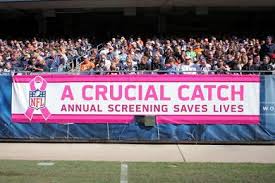Of the various Health Literacy definitions, the Institute of Medicine (IOM) is probably the most widely cited one in the research literature. The IOM define health literacy as ‘the ability to obtain, read, understand and use healthcare information to make appropriate health decisions and follow instructions for treatment’. I maintain that a bit like health economics, health literacy is ubiquitous in our everyday lives. Moreover, there is an important overlap. To avoid market failure, health information must be understood and acted upon appropriately by the general public. This is especially true in cancer communication where poor health literacy can have fatal consequences.
An example that comes to mind is of hearing the tragic news of how a friend of a friend died from testicular cancer that had metastasised. He felt a lump on his testicle but was unaware of the seriousness of his complaint and unfortunately did not visit his primary care doctor until it was too late. For me, he died not from cancer but from ignorance. The same can be said of Jade Goody and her death from cervical cancer. The field of health promotion is often about combating ignorance. A study in the International Business Times showed that an Ignorance Index reveals that Italians are the most oblivious about social issues and demographic trends. I think it would be interesting to repeat this international comparison in knowledge of cancer causes, symptoms and prevention methods. One of the most misconstrued cancer prevention strategies has been the HPV vaccine.
HPV Vaccination
The most recent published data of uptake of the 3-dose HPV vaccination among 12-year old girls in countries like Australia (71%), Ireland (84.2%) and England (86%) is in stark contrast to the United States (34% for full coverage). There is a multitude of reasons why this is so including government sponsorship of school-wide vaccination programs. But also, a recent systematic review of studies (mostly conducted in the U.S.) examining correlates of HPV vaccine uptake in teenage girls identified the following personal cognitive factors: having higher vaccine-related knowledge, having a healthcare provider as a source of information and maintaining positive vaccine attitudes. Therefore, the authors concluded that interventions that improved understanding of and positive attitudes towards HPV vaccine may increase HPV vaccination coverage. However, a systematic review of 33 educational intervention studies did not show strong evidence to recommend any specific educational intervention for wide-spread implementation. Now that HPV vaccination is recommended for boys, how should policy-makers promote uptake of the vaccine? What they should not do is adopt the National Football League (NFL) philosophy of providing a simplified message in breast cancer awareness or what some have labelled as ‘misinformation’.
NFL Annual Mammography Campaign
An article in The Guardian highlighted this story. Every October, the NFL’s promote breast cancer awareness by broadcasting that ‘annual screening saves lives’.
This is what the American Cancer Society promotes too. However, this is at odds with the U.S. Preventive Services Task Force recommendations for breast cancer screening. Moreover, the National Cancer Institute is more pragmatic about their recommendation that women over 40 years of age should discuss with their physician, given the uncertainty about mammography (A Wall St. Journal article also asks the question – Is annual mammography good value for money?). From this health literacy researcher perspective the simplified message doesn’t help women to understand the risks and benefits of mammography to make an informed decision. A sentiment echoed in the following quote from the journalist (Karuna Jaggar) that wrote the NFL piece: “Oversimplified messages and widespread falsehoods like the NFL’s can lead many women in the US to overestimate their risk of breast cancer, overestimate the benefit of mammograms and underestimate the harms from routine screening. Inaccuracies like the NFL’s manipulate women’s emotions through fear-mongering and false promises”.
Attention to Communication
So, when it comes to promoting cancer prevention and care, advocating that particular attention be given to ‘cancer literacy’ seems important to me. The economist in me, asks the question what is the most efficient way to promote ‘cancer literacy’ that represents the most value-for-money? My opinion is that traditional mediums such as billboards, TV and print advertisement are likely to be expensive, lack market penetration and allow only for over-simplified slogans. The modern battleground for getting the message out there is all about engaging with the public using social media. This platform allows for the salient information to be communicated and engaged with by the general public.
Social Media in Cancer Prevention
So, back to how to promote the use of the HPV vaccine – well there are government websites such as those in Australia that are easy to navigate for students, parents and other stakeholders. But the main digital battleground is played out YouTube, Facebook and Twitter that have user-engagement. There are many videos spuriously advocating against HPV vaccine that have lots of views and comments. In comparison, relatively few videos promote in favour of HPV use – My favourite is from Dr. Aaron Carroll (Healthcare Triage). The question that I pose is whether digital dissemination of information by public sector health authorities is utilised enough in helping the general public make decisions on cancer prevention strategies?
Along with videos, infographics are great ways of promoting ‘cancer literacy’. In general, I really like the American Institute for Cancer Research prevention infographics. For HPV vaccination, I really like the CDC’s infographic. These are important tools to use when it comes to the Twitter world. Research has shown that negative messages spread faster than positive ones and they say a picture tells a thousand words which are more than the 140 characteristics allowed on Twitter.
Bottom Line
The bottom-line of this blog is that once the scientific/medical community are certain that a cancer prevention strategy is effective and then cost-effective, stakeholders must invest appropriate and sustained attention to dissemination of information to improve cancer literacy. Availing of social media allows for improved understanding, is relatively cheap and is very effective.

